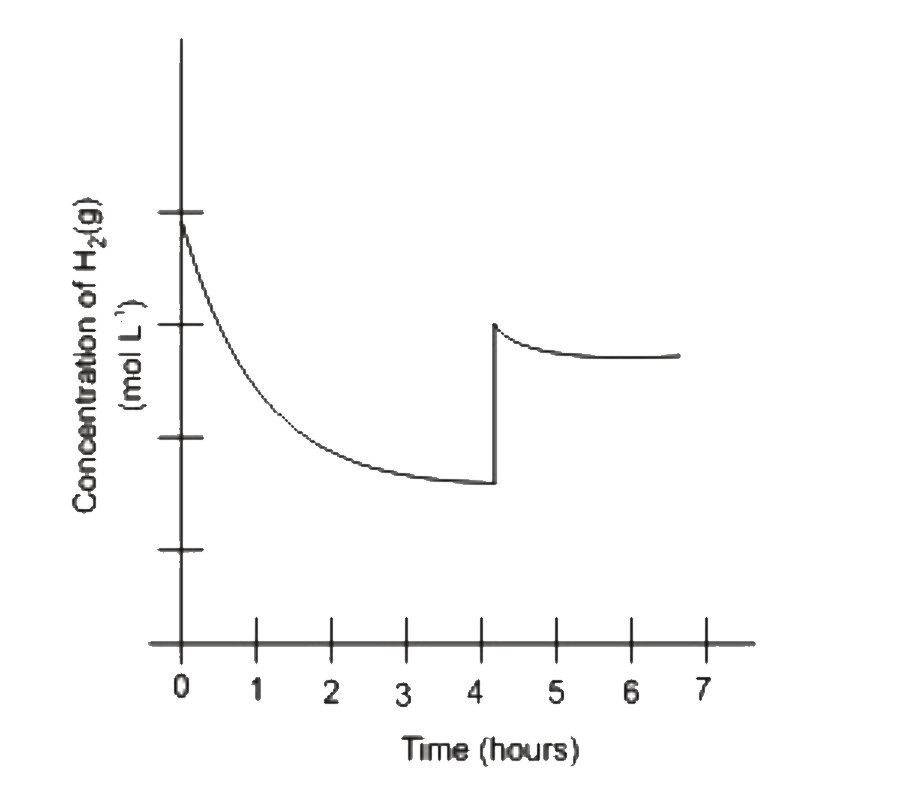150 mL of pure phosphine is decomposed to produce vapours of phosphorus and H2. The change in volume during reaction is :
80mL
75mL
50mL
60mL
The correct Answer is:D
To solve the problem of the change in volume when 150 mL of pure phosphine (PH₃) decomposes to produce vapors of phosphorus (P₄) and hydrogen (H₂), we can follow these steps:
Step 1: Write the balanced chemical equation for the decomposition of phosphine.
The decomposition reaction of phosphine can be represented as:
4PH3→P4+6H2
Step 2: Determine the volume ratios from the balanced equation.
From the balanced equation, we see that:
- 4 moles of phosphine (PH₃) decompose to produce 1 mole of phosphorus (P₄) and 6 moles of hydrogen (H₂).
- Therefore, the volume ratios are:
- 4 mL of PH₃ produces 1 mL of P₄ and 6 mL of H₂.
Step 3: Calculate the volume of hydrogen produced from the given volume of phosphine.
Given that we have 150 mL of PH₃, we can find the amount of hydrogen produced using the volume ratio:
Volume of H2=(6 mL H24 mL PH3)×150 mL PH3
Volume of H2=64×150=225 mL
Step 4: Determine the change in volume during the reaction.
The change in volume can be calculated by subtracting the initial volume of phosphine from the total volume of gases produced (which includes the volume of hydrogen, since phosphorus is a solid and does not contribute to the gas volume):
Change in Volume=Volume of H2−Volume of PH3
Change in Volume=225 mL−150 mL=75 mL
Conclusion:
The change in volume during the reaction is 75 mL.
---
The decomposition reaction of phosphine can be represented as:
4PH3→P4+6H2
From the balanced equation, we see that:
- 4 moles of phosphine (PH₃) decompose to produce 1 mole of phosphorus (P₄) and 6 moles of hydrogen (H₂).
- Therefore, the volume ratios are:
- 4 mL of PH₃ produces 1 mL of P₄ and 6 mL of H₂.
Given that we have 150 mL of PH₃, we can find the amount of hydrogen produced using the volume ratio:
Volume of H2=(6 mL H24 mL PH3)×150 mL PH3
Volume of H2=64×150=225 mL
The change in volume can be calculated by subtracting the initial volume of phosphine from the total volume of gases produced (which includes the volume of hydrogen, since phosphorus is a solid and does not contribute to the gas volume):
Change in Volume=Volume of H2−Volume of PH3
Change in Volume=225 mL−150 mL=75 mL
The change in volume during the reaction is 75 mL.
Topper's Solved these Questions
Similar Questions
120 mL of pure phosphine is decomposed to produce vapours of phosphorus and H2. The change in volume during reaction is :
View Solution180 mL of pure phosphine is decomposed to produce vapours of phosphorus and H2. The change in volume during reaction is :
View Solution140 mL of pure phosphine is decomposed to produce vapours of phosphorus and H2. The change in volume during reaction is :
View Solution130 mL of pure phosphine is decomposed to produce vapours of phosphorus and H2. The change in volume during reaction is :
View Solution80 mL of pure phosphine is decomposed to produce vapours of phosphorus and H2. The change in volume during reaction is :
View Solution100 mL of PH_(3) on decomposition produced phosphorus and hydrogen. The change in volume is :-
View Solution560 mL of carbon monoxide is mixed with 500 mL of oxygen and ignited. The chemical equation for the reaction is 2CO+O2→2CO2.
Calculate the volume of oxygen used and carbon dioxide formed in the above reaction.View Solution500 ml of a H2O2 solution on complete decomposition produces 2 moles of H2O. Calculate the volume strength of H2O2 solution ?
View SolutionA solution of H2O2 labelled as '20 V' was left open. Due to this some, H2O2 decomposed and volume strength of the solution decreased . To determine the new volume strength of the H2O2 solution, 10 mL of the solution was taken and it was diluted to 100 mL . 10 mL of this diluted solution was titrated against 25 mL of 0.0245 M KMnO4 solution under acidic condition. Calculate the volume strength of the H2O2 solution .
View SolutionThe reaction between phosphorus (P4) and hydrogen (H2) can result in the formation of phosphine (PH3) as shown :
P4(s)+6H2(g)⇔4PH3(g)
The graph shows the change in concentration of hydrogen for this reaction in which the system was distrubed after four hours.

Which of the following could explain the change in hydrogen concentration at time = 4 hours?View Solution

